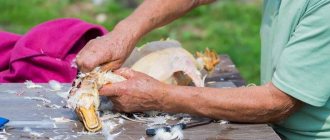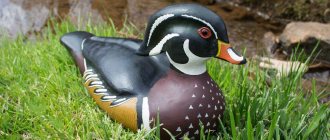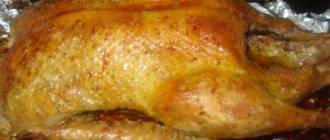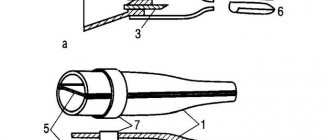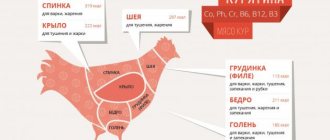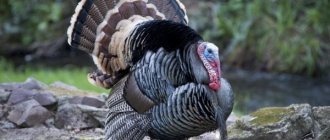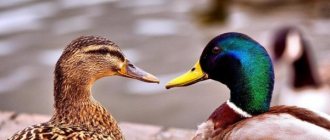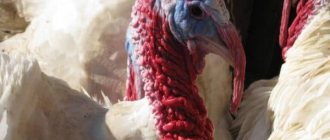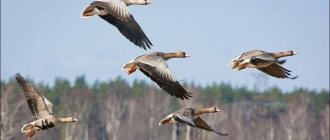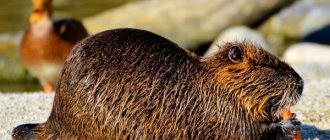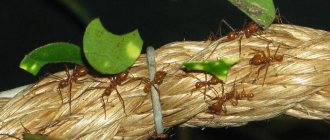Poultry farming » Ducks
0
6341
Article rating
Kira Stoletova
Among all the poultry that are in greatest demand among domestic and foreign farmers, ducks occupy one of the most prominent places. And this is quite natural, because the birds in question have many undeniable advantages. They are quite unpretentious, and their meat boasts excellent taste.
Slaughtering ducks at home
In addition, they quickly turn from ducklings into adults, and therefore it is not at all surprising that such a topic as slaughtering ducks at home is consistently popular. Of course, such an event cannot be called pleasant, but in many cases it really cannot be avoided, which makes the disclosure of this topic a completely justified decision.
When can you cut ducks?
All breeds of ducks grow quickly, but differ in the toughness of the meat, its taste, the content of substances useful to humans, as well as the weight that the bird gains.
The optimal age for slaughter is considered to be 60–75 days.
During this period, the duck gains the necessary weight (depending on the breed - from 2 to 3.5 kg) and acquires healthy fat. If you skip this time, the taste of the feathered meat deteriorates - it “dries out”, becoming tougher. This is explained by the fact that from the third month of life, ducklings begin to lose fat, acquire feathers, and after a couple of months they begin to lay eggs, moving into the category of laying hens.
Slaughter time
Depending on the conditions in which the duck grows, how it is fed and where it is kept, the timing of slaughter will be different. An important determining factor is the breed of duck itself. Broiler ducklings are characterized by intensive growth and weight gain. Other breeds, incl. and indo-ducks, mature later. For rapid weight gain and intensive growth, birds are fed a balanced diet: grain, grated vegetables, crushed wheat and oats, and seaweed.
The optimal age of a duck for slaughter is 2-2.5 months from the moment of its birth.
At the age of 55 to 60 days, the bird already has sufficient weight and thick, not too hard plumage. A later date for slaughtering a duck will complicate the plucking procedure, and the duck meat itself will not be as tasty and tender. From the 60th day of life, the bird begins to rapidly lose weight, increasing its plumage. Therefore, it is important not to miss this age in order to end up with a large carcass.
Mechanical
In addition to manual methods, people have come up with machines called feather removal machines to facilitate this work. Many mechanical devices for removing feathers are made by yourself, using a drill and attachments with striking fingers.
Plucking a duck with this advanced drill takes an average of ten minutes. But speed, unfortunately, does not always imply quality. Often, after such processing, the condition of the carcass leaves much to be desired - the skin is damaged, limbs are twisted, there are some bruises. This describes the worst, but possible option. Therefore, whether to use this method or not, decide for yourself.
And also, if you keep a lot of ducks and the time has come to slaughter some of them, then do it so that other ducks do not see. That is, in a place specially equipped for this purpose. And this is not only for humane reasons, but also for practical ones. Because if you save their nerves, you will get more meat in the future.
When to cut ducks so that there are no stumps?
The formation of stumps in waterfowl is observed during the molting period. It occurs twice a year - in summer and autumn. During this time, the birds undergo a complete change of plumage. It is not recommended to kill ducks during the molting period. The carcass will have a large number of stumps, and plucking it will cause a lot of difficulties.
According to reviews from experienced poultry farmers, it becomes obvious that the optimal time for slaughtering Peking ducks occurs approximately on the 65th day. At this age, the bird weighs about 2 kg, and the carcass is not yet very fat. It is impossible to indicate the exact time of slaughter. It depends on the conditions of detention, feeding, and region.
Muscovy ducks are slaughtered at home at a later date. It is recommended to slaughter males at approximately 85 days, and females at 70 - 75. Experienced breeders have learned to determine the time of slaughter by external signs. When examining the skin, the stumps can be easily felt. If they are not there, it’s time to send the duck to slaughter, and plucking the carcass will not be difficult.
Subtleties and nuances of quick plucking
Experts have some secrets for plucking ducks. Their use will preserve the presentation of the product to the maximum. In addition, the time required for manipulation will be reduced. The following factors should be taken into account:
- recording the time of molting before slaughter. It is necessary to avoid the coincidence of the molting period with the moment of slaughter. To do this, several feathers are pulled out of a living duck. If they come out easily and painlessly, you can start slaughtering. During the molting process, the rods come out with difficulty, and it is better to immediately clean the molted individual from the skin, along with the feathers;
- pause after slaughter. If you wait 2-4 hours after killing the bird, the fat under the skin will solidify. This fact will keep the skin intact when plucking feathers. The optimal temperature is about +5C. Dried meat also has better flavor due to the removal of excess liquid. A cool garage, cellar, barn or refrigerator with ventilation function is suitable for aging. The carcass can be left hanging or placed in a large plastic container;
- preparation of the workplace. It is better to carry out plucking outdoors, since it is unlikely that it will be possible to avoid clogging the space. It is advisable to cover the floors in the room; this will make subsequent cleaning easier. For feathers, you need to prepare 2 bags or boxes - for small and large specimens. It is rational to allocate a container for fluff. Sorting as you go is a huge time saver. The most comfortable position is to sit on a chair, place the boxes between your legs or in front of them, rest your duck head down on your knees;
- the order of parts of the carcass during processing. From a bloodless duck, feathers are plucked from the wings and tail, moving to the sternum and dorsal surface. In case of traumatic slaughter without bloodletting, you should start from the back, successively moving to the stomach, shoulder girdle, pair of wings and tail;
- direction of movement. Large feathers are removed only according to growth to prevent skin tearing. Small ones can be pulled both according to height and against it, as is more convenient for the hands;
- preservation of skin integrity. If the cover is damaged in at least a couple of areas, the skin begins to crawl. In such conditions, plucking is very difficult, and sometimes not at all realistic;
- pre-treatment of fluff. The fluff will not fly away or create dust if it is sprinkled with water in advance. Residues after plucking are removed with a blunt knife;
- confidence of movements. Jerks are made sharply and quickly with a firm hand. When pulled smoothly, the skin tears. In one movement, grab a small bunch. It is more difficult to pull out many feathers at once.
In addition to the basic recommendations, it is worth remembering that it is not always possible to pluck a duck clean. The hardest feathers of the neck, wings and head can be left for later processing.
Prepare the duck for slaughter
A few rules that will save you from disappointment:
- You should not slaughter a duck whose weight and size do not reach the average values.
- If you slaughter a duck later than normal, then in the vast majority of cases the meat will have a much less pleasant taste.
- Before slaughtering, the duck should not be fed for 12-15 hours. If you plan to slaughter a bird in the first half of the day, you can organize an overnight fast for it.
- Provide the duck with free access to water.
- The room chosen for keeping poultry must be illuminated throughout the dark time of the day.
All of the above measures must be taken into account to ensure that the intestines of a duck sent for slaughter are empty.
Plucking immediately after slaughter
Removing feathers from freshly killed game is preferred by most hunters. This is convenient from the point of view of cleanliness in the house, freezing and cooling in portable equipment. In addition, many people know that the crispy skin on roasted or smoked duck is a gourmet treat. It prevents fat from leaking out and drying out the meat by fire, and it preserves the specific aroma for which the race for the bird is started.
As a standard, the process proceeds in the usual dry way. Then the carcass is singed over a fire, the head, paws, and lower phalanx of the wings are cut off and gutted. The semi-finished product is sent to the smokehouse, to the fire or spit, or to the kettle.
However, experienced hunters do not like to spend a lot of time plucking feathers in the field. They prefer to use wax instead of tweezers and fingers. The operation is much faster. You can also use this trick at home.
- large cauldron with boiling water;
- a similar boiler with cold water;
- a piece of paraffin wax;
- knife and wire cutters.
Tools needed for plucking ducks immediately after slaughter.
Paraffin can be bought in stores like “Hunting and Fishing”, hobby shops and departments with manicure supplies. Each bird requires 1 small block (about 10 by 10 cm). The wax plucking step by step looks like this:
Step 1. Remove legs and wings. Use the usual method using wire cutters and a knife. If necessary, these parts can be left in place for further identification of the type of carcass. Some hunters advise leaving the legs to hold the duck during further stages of processing.
Step 2. Pull the tail feathers from the tail and the flight feathers from the wings (if they are left). You need to pull according to height. They can even be done by hands without tweezers.
Step 3. Pluck the largest feathers from the body against the growth direction. It is better to pull and tear off using the grip of your thumb and index finger. Temporarily set the carcass aside on a clean surface.
Step 4: Prepare pots full of freshly boiled and cold water.
Step 5. Remove the container with boiling water from the heat. Melt a block of wax in it. The desired state is when a thin film of paraffin floats to the surface.
Step 6: Dip the game. With a quick movement, immerse the duck in the layer of wax that has collected on the surface. It is advisable not to tear the paraffin film so that it completely envelops the carcass. Hold for no longer than 2-3 seconds. Overheating threatens bursting entrails and spoilage of meat.
Step 7. Immediately transfer the bird to a bucket of cold water. Dip for 1-2 minutes until the wax sets. It is also important not to overdo it.
Step 8. Perform “epilation”. Squeeze the bird in the belly area. The coating will crack. Now it’s convenient to remove the wax in pieces. Rip off all the paraffin.
The result will be a duck with smooth flesh-colored skin with a slight pink tint. There is no need to singe such a carcass anymore.
Used wax can be heated, filtered, cooled and reused. An alternative to paraffin is boiling resin. The principle of operation is completely similar.
Gutting
In field conditions, after plucking, it is preferable to immediately carry out gutting.
Step 1. Cut off the head. If the skin with feathers was removed, at this stage you need to pull the skin behind the head and cut the connection between the neck and body with pliers. When plucking, simply cut off the neck as close to the shoulders as possible.
Step 2. Amputate the tail. The tail is a small piece of fat at the rear of the carcass. Use pliers or a blade to separate this piece in a circle.
Step 3: Cut the ribs. Below the ribs the duck has no meat. The easiest way to remove the internal organs is to make an incision between the base of the chest and the rest of the cavity. Using a knife, you need to rip several strips under the breast bone. It’s better to start from the sides, moving towards the center. When the cuts are made, fingers are inserted into the middle ones. Then it is enough to pull towards yourself with a careful but forceful movement. The top of the bird must be held firmly with the other hand. The peritoneum will come off along with the intestines. Often the liver and heart come out at the same time.
Step 4. Remove the liver and heart, if they have not come out earlier. Cut off the stomach. Separate the bile sac (green capsule) from the liver. These organs can be removed from the top if for some reason the intestines are not removed with the peritoneum and there is a risk of touching them. Bile and intestinal contents should not be allowed to leak onto the meat. This will spoil its taste.
Step 5. Pull out the remains of the esophagus. Cut off a piece of pulp with a bullet, if this has not been done previously. Rinse the carcass.
The most valuable part of a duck is the breast fillet. In order to save space, meat hunters immediately separate only it. In this version, the process looks slightly different. After bending the skin up to the neck, they step on the head with one foot and on the paws with the other. The skin is placed under the back, the belly is turned upward. The breast is pulled out, the rest of the carcass, including the organs, remains on the ground. The belly is trimmed under the fillet. They insert their fingers under the bone near the fork on the neck. With the other hand, grab the sternum bone near the lower ribs. All that remains is to firmly but slowly pull the meat, rocking the skin back and forth. It will come out along with both wings if they have not been amputated previously.
How to kill a duck
There are two proven ways to slaughter a bird correctly. How exactly to slaughter ducks is decided by each individual farmer. Much here depends on experience, the presence of an assistant and the planned number of ducks that need to be killed.
Artery dissection
The cleanest method of killing a bird is to cut the artery in the throat. To do this, hang the duck by its legs over a bucket, secure the wings on the back or sides of the body with any suitable means (rope, tape). You can secure the entire body of the bird with a special metal cone.
Then they pull the neck down and cut the artery in the throat. All the blood flows out of the duck in a quarter of an hour. The owner only needs to hold the bird over the bucket for the first couple of minutes so that the blood does not splash around.
This method of slaughtering ducks at home can be done by one person (even a weak woman), but it requires time to hang and tie (fix) the duck.
Therefore, they resort to it when it is necessary to kill 1-2 birds at a time.
Duck slaughter
Most often, an external method is used to kill a duck - simply decapitating the bird.
- First, the duck's feet are tied and hung upside down.
- The bird's wings are pressed to the back, the neck is pulled back and the carotid artery is cut with a sharp knife, holding it at a slight angle relative to the neck.
- Leave the carcass hanging for 15 minutes to allow the blood to drain.
- After 15 minutes, the carcass is removed and gutted and cut up.
Using an ax
If a poultry farmer needs to slaughter a dozen or more ducks per day, then most farmers choose a simpler method - using an ax (cleaver). In this case, the duck is placed on a chock on its side. One wing is pressed to the chock by the bird itself, the other is held by the farmer with his free hand.
When the duck relaxes and its neck is above the chock, the head is cut off with a sharp blow from the ax. After this, the bird must be held on the chock for a minute or two, pinching its wings and legs. The fact is that post-mortem convulsions in birds can be strong and last quite a long time. There are often cases when a headless duck, having fallen off the chock, ran around the yard for a minute, covering everything with blood.
When the convulsions stop, the bird is placed feet up in a common container to collect blood. An experienced farmer is able to properly slaughter a duck using an ax alone.
However, if there are a lot of birds to be slaughtered, then it is better to split the ducks together: one person holds the bird on the chock with both hands, the second chops off the head and helps a partner hold the bird until its convulsions stop.
A similar sign
all projects
For business
Projects
Russian EnglishBelaruskayaქართულიUkrainskTatar teleҚазқ тиліՀայերենO'zbek tiliRomână (MD)Azərbaycan diliRomână (RO)Türkçe
added June 10, 2022 at 03:49 pm
Here can be your advertising
Class 1
added June 14, 2022 at 11:58 pm
Paid consultation, please contact me in a personal message regarding any issue with pigs or poultry. in the comments
Class 56
added January 23, 2022 at 11:06 am
@ GROUP RULES @: In the group it is strictly prohibited: 1 Insulting participants and administration 2 Using profanity 3 Inciting ethnic and religious hatred 4 Publishing commercial advertising, sales only in the “Products” section 5 It is prohibited to open new topics with links to other sites in the title, titles expressing the author’s emotions, such as: “Save”, “Help”, “Help needed!”, “Question”, “Help Me”. 6 As well as publication of materials containing erotica and porn
Cutting meat
After removing the feathers from the bird, it is necessary to cut and gut it for further storage.
- Before gutting the carcass, cut off the paws and wings. The paws are cut off below the heel joint, and the wings are cut off at their bend.
- A T-shaped incision is made above the anus, through which the intestines and other internal organs and fat are removed.
- A hole is cut in the neck through which the trachea and esophagus are removed.
- Gutted poultry must be thoroughly rinsed in running water, inside and out. After this, the carcass must be thoroughly dried and cooled for several hours on the bottom shelf of the refrigerator or in a cool room.
If portion freezing is necessary, the bird can be cut into pieces. To do this you will need a sharp knife, pruning shears and cutting scissors.
- Use a knife to cut off the legs, trying to make the cut closer to the back.
- The wings are separated using pruning shears, getting as close to the spine as possible.
- The easiest way to cut ribs is with scissors.
- The fillet is cut along the spine, separating it with a knife. It is important to remove the sebaceous gland from it so as not to spoil the taste of the meat.
- After cutting the duck, only the backbone remains, which can be used to prepare broth.
Processing methods
Plucking feathers from a duck carcass is not the most pleasant experience even for experienced housewives, but there are several ways to make this process easier.
Dry
This is the most common method of feather removal and the most labor-intensive, since it is done manually:
- lay the duck on a sheet of paper, pull out the feathers with your fingers: large ones are plucked in the direction of growth, small ones - in the opposite direction;
- the remaining hairs are singed over the fire, being careful not to heat the carcass to avoid melting the fat;
- After cleaning is completed, the bird is washed under running water.
Hot
This approach involves steaming the bird’s body:
- the fabric bag is soaked in boiling water and then wrung out well;
- the carcass is placed in a hot bag and tied tightly for 15–20 minutes;
- iron the plumage through the fabric with a hot iron;
- the bird is removed from the bag and plucked.
scalding method
The fastest way to process poultry, most often used by housewives:
- the duck is placed in a basin or other deep dish;
- heat the water to 80 °C;
- slowly pour over the carcass from all sides, then leave it in water for a quarter of an hour;
- they take the bird out of the water, let it drain, and then pluck the feathers;
- Upon completion of plucking, the remaining feathers are singed over the fire.
Further actions
Having finally gutted the beaten bird, you can begin washing it with running water, drying it and then freezing it. If the carcass is intended for preparing a particular dish without delay, then the sequence of further actions is as follows:
- First of all, the hams are separated using a suitable knife - so that the meat is grabbed as close to the spine as possible. You should do the same with the wings.
- The loin should be cut lengthwise, and scissors can be used to separate the ribs and tail.
- It is advisable to chop the meat into several portions, not forgetting to first get rid of the sebaceous gland. The latter can make the taste and smell of duck meat much less pleasant, and therefore this recommendation should not be ignored.
- As for the skin, it can be melted directly with fat, and it makes sense to use the remaining backbone of the killed bird in the preparation of various first courses.
Finally, it remains to be noted that using the method under consideration, both ordinary domestic ducks and their musky relatives, Indian ducks, whose popularity is steadily growing every year, can be cut. This thesis is also true for wild representatives of this biological species, with the only difference that in the process of butchering birds killed during hunting, it is necessary to pay increased attention to removing pellets stuck in them from the carcasses.
How to gut a duck?
Immediately after plucking and singeing, you can gut the duck. Where to start and how to cut a duck. To do this, you need to know some features of this fairly simple process:
- Cut off the tips of the wings with a sharp knife. After this, exactly at the joint, break and cut off the legs. Next, make a transverse incision in the area of the larynx and carefully remove the trachea from there. Then make a cut in the lower part of the belly of the carcass (this is the place where the bone base ends). Make all cuts carefully so as not to cut the thin walls of the intestines and remove the insides, maintaining their integrity.
- Following this, the intestines, stomach, liver, intestines and heart are removed, and during the gutting process, excess fat is separated, which will later be useful in the household (stewing, frying, etc.). A duck gutted in this way is thoroughly washed with water to remove blood.
First cutting stage
Having completed the procedure of plucking the duck carcass, you can begin cutting and gutting it. If we highlight the first action provided for in such a situation, then it is the removal of intestines. In order to perform it, you need to make a special hole in the area of the anus of the carcass (if the intestines are not removed, then the latter cannot be stored in the refrigerator for a long time). As for further steps, their sequence is presented in the following list:
- Before gutting a dead bird, it is important to cut off its neck.
- Next, the wings and legs are separated. The first ones must be cut along the line of the initial one, and the second ones - a couple of centimeters below the heel joint.
- The carcass should be gutted after the appropriate cut has been made on the belly. Subsequently, the extracted giblets can be used as ingredients for minced meat or broths.
- Do not forget about removing the goiter and esophagus. Proper cutting of a duck involves removing it through a hole in the neck.
The duck carcass must be cut so that there are no abdominal fat deposits left in it - they must be removed.
Meat storage
After the poultry has been slaughtered and cut up, the question arises about the rules for storing carcasses. Short-term storage requires a temperature of 0-4 degrees. If there is no refrigerator nearby, then the meat is wrapped in clean cotton cloth. This way the product will remain fresh for up to 5 days.
For long-term storage you will need a freezer. The product can also be preserved by salting. The brine is prepared from 1 liter of water and 300 g of salt, and then poured into the carcass. One piece will require 150 g of liquid.
